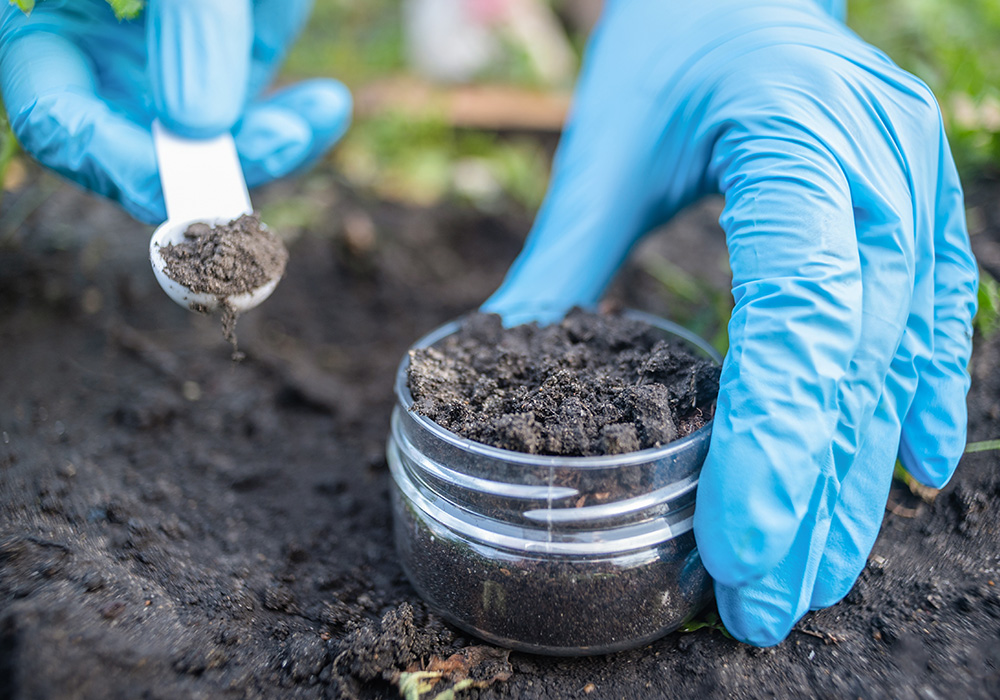
One teaspoon of soil contains between 100 million to 1 billion individual bacteria. Despite their size, after plants, microbes in the soil represent the largest fraction of biomass on Earth. Bacteria are most abundant at 15% of the total living biomass, but the biomass of fungi (2%) and Archaea (1%) are also larger than that of animals (0.3%). Soils also harbour the most diverse and complex microbiome on Earth, with often more than 50,000 species per gram. Not only do soil microbes comprise the majority of biological diversity on Earth, but they are the foundation for soil food webs, and therefore underpin the diversity of higher trophic levels. These microbiomes have great metabolic diversity with many enzymatic functions still being unknown. Their combined metabolic potential means that their activities drive, or contribute to, the cycling of all major elements (e.g. C, N, P). Moreover, the nutrient cycling affects the structure and function of the soil ecosystem and provides important Ecosystem Services. Microbes are important for the biological control of pests, weeds, and pathogens, therefore they are important players in global biodiversity. Lastly, they are important players in carbon storage and regulation of greenhouse gas emissions, as both store carbon as stable organic matter and release CO2, CH4 and N2O.
As mentioned above, microbes in the soil act as both a source and a sink of greenhouse gases as they carry out the dichotomous roles of stabilization of carbon inputs into organic forms, and mineralization of soil organic carbon. On one side, soil stores about three times more organic carbon (C) than the Earth’s atmosphere. On the other hand, soil respiration is the largest single source of carbon dioxide (CO2) from terrestrial ecosystems to the atmosphere – about ten times larger than anthropogenic emissions. However, the feedback to climate warming and underlying microbial mechanisms are still poorly understood. Therefore, soil microbial respiration is an important source of uncertainty in projecting future climate and carbon (C) cycle feedbacks. Soil total respiration includes both autotrophic respiration from plant root growth and root biomass maintenance, and heterotrophic respiration from microbial decomposition of litter and soil organic matter (SOM). Various short-term experiments show that soil respiration increases exponentially with temperature, which would suggest a very large positive feedback impact. However, more long term experiments are needed as microbial communities are known to shift as part of thermal adaptation.
In a longer term experiment, researchers exposed plots of land to continuous warming for over 7 years. They extracted soil DNA and performed amplicon sequencing (16S and ITS), quantified gene abundances using a geochip, and correlated this data with carbon flux and respiration measurements. They showed that by incorporating microbial functional gene abundance data into a Microbially-enabled Ecosystem Model, they significantly improved the modeling performance of soil microbial respiration and reduced model parametric uncertainty. Moreover, modeling analyses indicated that as the microbial population shifted through thermal adaptation, there is considerably less heterotrophic respiration and hence less soil C loss. If such microbially-mediated dampening effects can be generalized across different temporal and spatial scales, then the potential positive feedback of soil microbial respiration in response to climate warming may be less than previously predicted.
As shown above, microorganisms can adjust their respiratory responses to temperature over a long period by changing their metabolism and community structure. At the same time, the eco-physiology of microbes is generally expected to be phylogenetically conserved because of the evolutionary history of a given species. Thus, the ecological traits of microorganisms mirror both phylogenetic constraints and environmental acclimation. However, the degree to which these traits are affected by phylogeny and environment remain uncertain.
Researchers looked into this interaction between phylogeny and the environment in another long term climate experiment in which soil plots were exposed to four different climate scenarios for 10 years: 1) control (Cntrl) had ambient temperature and CO2 concentration, 2) elevated temperature by +2°C (eT), 3) elevated CO2 concentration up to 500 ppm (eCO2), and 4) combined CO2 enrichment and warming (eTeCO2). After extracting soil DNA, they performed soil metagenomic analysis combined with stable isotope probing and examined the response of the microbes to these four climate scenarios. Interestingly, they found three growth strategies of bacterial taxa – rapid, intermediate and slow responders – that are phylogenetically conserved. For example, members of class Bacilli and Sphingobacteria are mainly rapid responders. However, these phylogenetic patterns are partially confounded by environmental factors, as the different climate scenarios alter the growth strategies of over 90% of species. The variance for slow responders is primarily explained by climate, whereas the growth of rapid bacterial responders is more influenced by phylogeny. Overall, these results highlight that it is important to understand the phylogenetic composition of the soil microbiome in addition to climatic constraints to be able to predict the growth strategies of soil microorganisms under global change scenarios.
